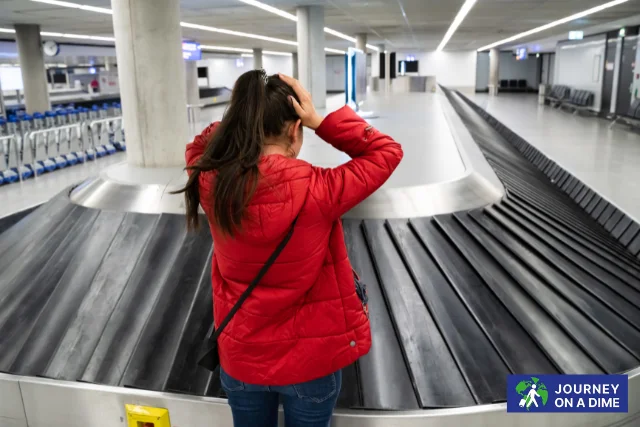Avoiding Lost Luggage: What You Can Do

There’s nothing quite like the excitement of landing in a new destination—only to stand at baggage claim with a sinking feeling as the carousel slows to a halt, and your bag is nowhere to be seen. Lost luggage is every traveler’s nightmare, turning a smooth trip into a logistical scramble. While airlines typically return lost bags within a few days, the stress, inconvenience, and potential cost can take a toll on your travel plans.
Fortunately, there are smart, proactive steps you can take to greatly reduce the chances of losing your luggage—and to make recovery easier if it does go missing. Whether you’re traveling for business, vacation, or family emergencies, these tips will help you stay ahead of the baggage blues and ensure your trip stays on track.
Why Lost Luggage Happens
Lost luggage often isn’t truly “lost”—it’s usually delayed or misrouted. Still, the experience can be deeply frustrating. Several factors contribute to lost luggage:
- Tight connections: Bags may not make the transfer between flights if your layover is too short.
- Manual errors: Mislabeled tags or human mistakes in handling can send your suitcase to the wrong place.
- High traffic or system glitches: Baggage tracking systems can get overwhelmed, especially during holidays or peak travel seasons.
- Security delays: If your bag is pulled for additional screening and doesn’t catch up in time, it might not be loaded onto your plane.
Knowing the causes can help you take steps to avoid them entirely.
Smart Packing Starts Before You Fly
Avoiding lost luggage begins before you even zip up your suitcase. Here’s how to start smart:
1. Opt for Carry-On When Possible
The simplest way to avoid lost luggage? Don’t check it. If you can pack light, bring a carry-on that meets airline requirements. Not only does this eliminate the risk of baggage going missing, but it also saves you time at check-in and baggage claim.
2. Use Distinctive Luggage
Choose a bag that stands out—a brightly colored suitcase, unique tag, or a bold ribbon can make your luggage easier to identify on a carousel and harder to grab by mistake.
3. Label Everything Clearly
Attach durable luggage tags with your name, phone number, and email address. Inside the suitcase, place a sheet of paper with your full itinerary and contact details in case outer tags are lost.
4. Avoid Overpacking and Remove Old Tags
Don’t push your bag to the bursting point—it may cause it to open during transit. And always remove tags and stickers from past trips to prevent confusion at baggage scanners.
At the Airport: Best Practices for Bag Security
You’ve packed wisely—now it’s time to get your luggage safely from point A to point B.
5. Check in Early
Getting to the airport early ensures your bag has enough time to be properly processed and loaded. Late check-ins increase the chance of your bag not making it onto the plane.
6. Double-Check the Bag Tag
At check-in, verify that the tag the agent places on your bag matches your final destination. It’s easy for a slip-up to happen, especially at busy counters.
7. Take a Photo of Your Bag
Snap a quick picture of your luggage before handing it off. If it gets lost, you’ll have a clear image to show the airline—making it easier to track.
8. Consider AirTags or GPS Trackers
Apple AirTags, Tile, or other Bluetooth and GPS-enabled devices allow you to track your bag from your phone. This tech-savvy trick has saved many travelers from prolonged panic when bags go astray.
Connecting Flights and Layovers
Missed bags often happen during flight changes. If you’re not checking your luggage through to the final destination, or if you have a tight connection, your risk of lost luggage increases.
9. Allow Enough Layover Time
Avoid booking flights with less than 90 minutes between connections, especially for international trips. Your bag needs time to get transferred between aircraft.
10. Confirm Baggage Transfers
Ask at check-in whether your bag is checked through to your final destination. This is especially crucial when switching between partner airlines or going through customs.
When Lost Luggage Happens
Despite your best efforts, lost luggage still happens. Here’s what to do if it does:
11. File a Report Immediately
Go to the airline’s baggage service office before leaving the airport. File a report and get a copy. Include a description, photos, and a list of contents if possible.
12. Keep Receipts
If you need to buy toiletries, clothes, or essentials while your bag is missing, save all receipts. Airlines often reimburse these expenses—but only with proof.
13. Track Your Bag with Technology
If you’ve placed a tracking device in your luggage, use the app to see where your bag is. Sometimes you’ll know more than the airline staff!
14. Stay Persistent but Polite
Follow up with the airline via phone, email, or their mobile app. Persistence is key—but politeness goes a long way in encouraging helpful service.
Luggage Insurance and Travel Protection
15. Know Your Rights
Under the U.S. Department of Transportation rules, airlines are liable for up to $3,800 for domestic flights (as of 2025) if your bag is lost. But they don’t always volunteer this info—know your rights and ask for compensation.
16. Use Credit Cards with Baggage Coverage
Some premium credit cards automatically cover delayed or lost luggage. Check your card’s travel benefits before your trip.
17. Consider Travel Insurance
Policies often include reimbursement for delayed or lost bags. Be sure to review what’s covered, what counts as proof, and any time limits for filing claims.
Avoiding Lost Luggage on the Way Home
We often pay less attention on the return leg—but losing a bag on the way home can still sting, especially if it contains souvenirs, gifts, or valuable gear.
18. Pack Smart for the Return Trip
Use the same precautions: remove old tags, double-check the new ones, and track your bag.
19. Ship Bulky or Valuable Items
If you’re bringing home items that are fragile or expensive, consider shipping them via a trusted carrier. This minimizes the risk of damage or loss.
20. Keep Essentials in Your Carry-On
This includes medications, valuables, electronics, and one change of clothes. Even if your bag disappears, you’ll be comfortable while waiting.
Final Thoughts
Lost luggage is an inconvenience most travelers will experience at some point—but with preparation and the right strategies, you can drastically reduce the odds. From choosing carry-on luggage to embracing technology like GPS trackers, each decision helps protect your belongings and your peace of mind. When you travel smart, you travel with confidence—no matter where you’re headed.
FAQs
What is the first thing I should do if my luggage is lost?
Go immediately to the airline’s baggage claim desk at the airport and file a missing luggage report. Get a written confirmation or tracking number.
How long does it usually take to recover lost luggage?
Most lost luggage is returned within 24 to 72 hours. In some cases, it may take longer, especially for international travel or routing issues.
Can I get compensated for lost luggage?
Yes. Airlines are required to compensate for lost luggage under DOT regulations. The amount varies, and you’ll need receipts for claimed items.
Do Apple AirTags work inside checked luggage?
Yes, many travelers use AirTags or similar devices to track luggage in real-time using Bluetooth and crowd-sourced GPS from nearby Apple devices.
Is travel insurance worth it just for luggage issues?
If you’re bringing expensive items or will be moving between multiple destinations, travel insurance with baggage coverage can offer peace of mind and financial protection.
Image Source: Canva








